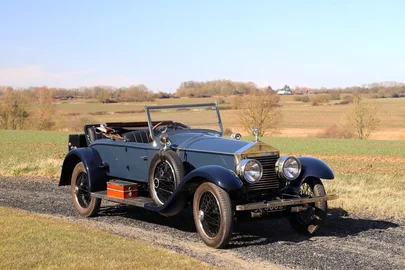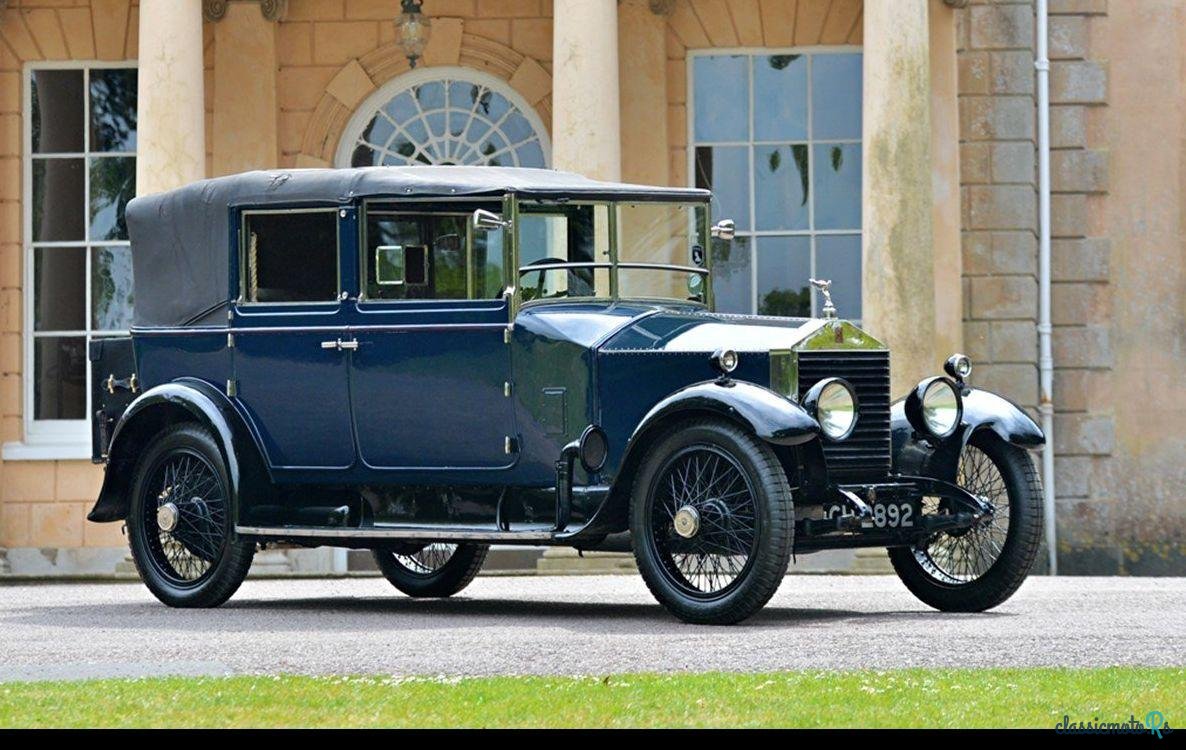
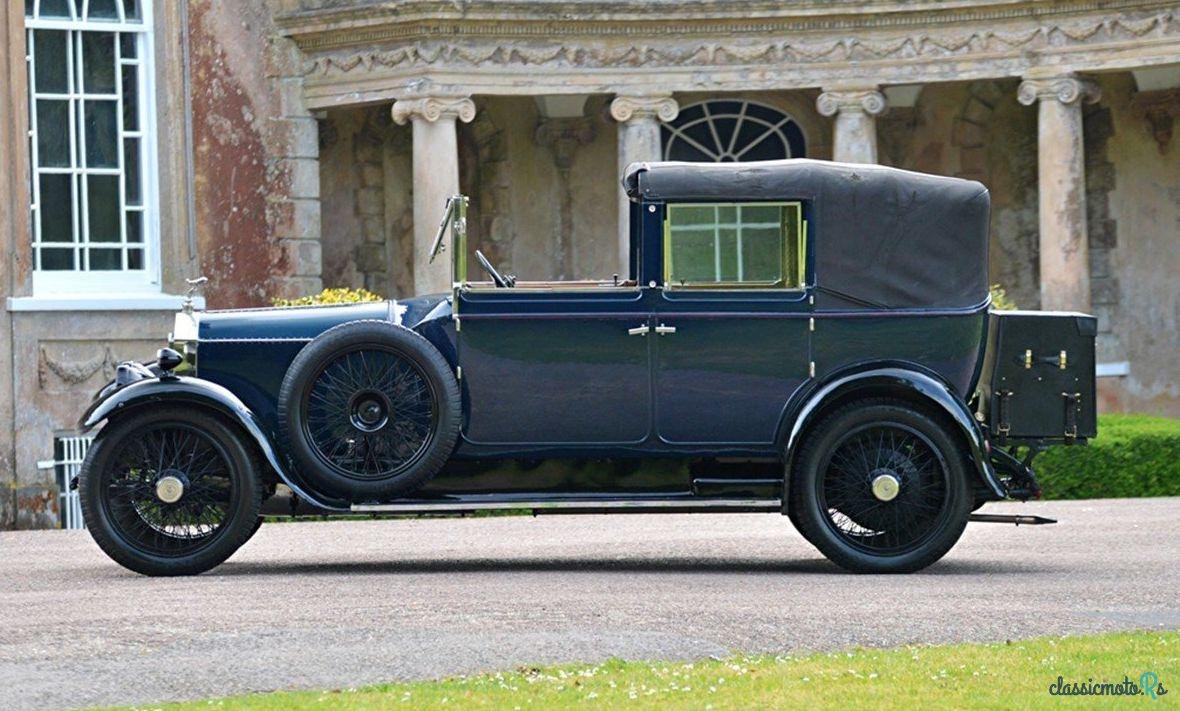
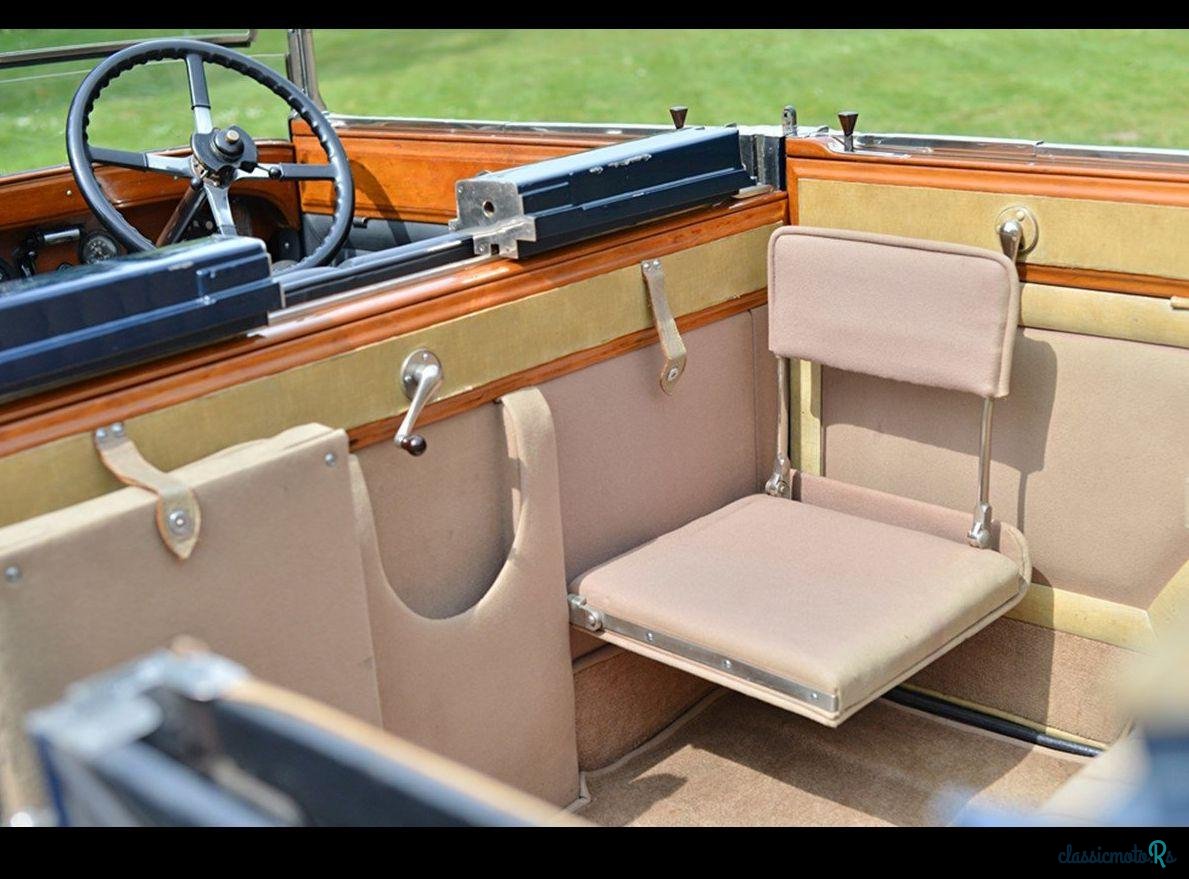
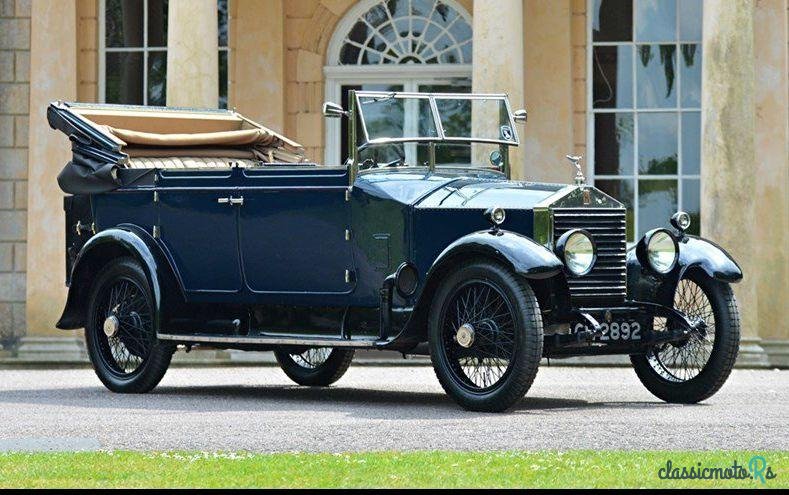
4 фото
1921' Rolls-Royce Twenty Goshawk Ii
Пожаловаться!Оценить!Запомнить это
£130,000Опубликовано 31 марта 2020ID: 7X9NR9
Истекло
5 лет, 8 месяцев назад
5 лет, 8 месяцев назад
Information from the owner
Возраст: 99 лет
Цвет: Синий
Комментарии продавца про 1921' Rolls-Royce Twenty Goshawk Ii
1921ROLLS ROYCE TWENTY GOSHAWK II SEDANCA CABRIOLET
• Personal car of Henry Royce
• Rolls Royce experimental car
• Oldest surviving Rolls Royce Twenty
This very car 4-G-II was the personal vehicle of Henry Royce and is the oldest surviving, post-war, Rolls-Royce 20HP and the third Goshawk II chassis built. It represents an important part of Rolls-Royce history and development. This car is featured extensively in reference books, including ‘The Rolls-Royce Twenty’ by John Fasal (a signed copy of this book is included in the history folder) and ‘Rolls-Royce and Bentley, The Experimental Cars’ by Ian Rimmer and has been in private collections for the last twelve years. It remains in good original condition throughout and is running well.
As an early, experimental car 4-G-II has the three-speed gearbox with centrally located gearshift and brakes on the rear wheels only. It is a unique, elegant Sedanca Cabriolet, coach painted in blue with black wings, with black leather interior to the front and a fawn cloth interior with occasional seats which fold into the centre division to the rear. It features a ‘Brooks’ style trunk that fits to the rear luggage rack with two fitted suitcases inside. 4-G-II has a large history folder containing copies of the original chassis cards from the RREC which confirms the car was for Henry Royce’s use, a buff log book which connects the chassis card ownership history to the supplied V5C registration document and history from 1962 which includes correspondence, invoices, old MoT test certificates and RREC club entries to various club rallies.
Fitted with an open tourer coachwork by Hooper & Co. (no. 5556), it was completed on 10th December 1921 and given the registration number CH 2892. This car was for the personal use of Henry Royce and in March 1922 it was driven by him and Mr Hives to Le Canadel, his house in France. At the end of May they brought the car back to England and West Wittering. Shortly after its return, problems developed in the cylinder head and the car was sent back to Mr Hives at the factory for extensive testing and modifications. After a period back at West Wittering, in February 1923 4-G-II was driven once again to Le Canadel for Mr. Royce’s winter season there. It was driven down by T. Maddocks who reported, amongst other things, that the spare wheel bolt had come out and was resting on the luggage grid. On 24th March 1923, Royce reported ‘the ignition is now going well on 4-G-II and I am very pleased with the car which I am now driving myself. The roads are so rough that it takes time to sort out what is a bad road and a good car’. A good performance was demonstrated when in April 1923 4-G-II climbed La Turbie in top gear with three occupants plus spare parts. On return to Derby the car underwent several further modifications including balloon tyres, a modified camshaft and a new exhaust system which increased the horsepower at 3000rpm from 47.1 to 51.4. Testing continued until May 1925 when the car went back to the factory to be made good for sale. It was fitted with a replacement engine number G 739 and the original body was replaced with a Sedanca Cabriolet body by T H Gill & Company of Paddington. 4-G-II was then sold as follows: Oct 1925 Sir F. Stanley Hewett, K.C.V.O. M.D. of St. James London SW1, Feb 1933 Captain S. Burt (Rolls-Royce Sales Dept.) London SW2, Feb 1934 Mr. Robert Coward of Englefield Green, Surrey, Feb 1936 Mr. H.A.R. Pattee of Cookridge, Leeds, Date unknown Mrs. C. Dawnay of Longparish, Hampshire, June 1949 Captain R. Benton of Andover, Hampshire,1962 Mr. M Tidy, Crowhurst, Sussex, March 2005 Mr. Adams, Farnborough, Hampshire, June 2008 Mr. Leonard, Poole, Dorset
During the First World War Rolls-Royce motor car production had been confined to military vehicles such as armoured cars, staff cars and ambulances. The company had devoted almost all its time in the production of aero engines and had earned as much of a reputation for building them as for building cars. The end of the war led to a considerable reduction in demand for the aero engines which meant that the Derby factory Rolls-Royce could start building the 40/50hp chassis (Silver Ghost) again. However, pre-war prosperity gave way to post-war austerity so it was obvious there would be a lack of demand for expensive luxury motor cars. To counter this reduction in sales Rolls-Royce thought there might be a demand for a smaller, less expensive chassis, as long as the quality and refinement did not suffer. The outcome was a new 20HP chassis which became known as ‘Goshawk’, following the aero engine practice of using names of birds of prey. The first Goshawk chassis was given the chassis number 1-G-I and started a long sequence of small horsepower, experimental chassis numbers finishing at 35-G-VIII. By the time the first Goshawk chassis was completed, sometime in 1920, it was already obsolete by a modified version which was on the drawing board, known as Goshawk II. This marvellous historically important vehicle is offered at £130,000
• Personal car of Henry Royce
• Rolls Royce experimental car
• Oldest surviving Rolls Royce Twenty
This very car 4-G-II was the personal vehicle of Henry Royce and is the oldest surviving, post-war, Rolls-Royce 20HP and the third Goshawk II chassis built. It represents an important part of Rolls-Royce history and development. This car is featured extensively in reference books, including ‘The Rolls-Royce Twenty’ by John Fasal (a signed copy of this book is included in the history folder) and ‘Rolls-Royce and Bentley, The Experimental Cars’ by Ian Rimmer and has been in private collections for the last twelve years. It remains in good original condition throughout and is running well.
As an early, experimental car 4-G-II has the three-speed gearbox with centrally located gearshift and brakes on the rear wheels only. It is a unique, elegant Sedanca Cabriolet, coach painted in blue with black wings, with black leather interior to the front and a fawn cloth interior with occasional seats which fold into the centre division to the rear. It features a ‘Brooks’ style trunk that fits to the rear luggage rack with two fitted suitcases inside. 4-G-II has a large history folder containing copies of the original chassis cards from the RREC which confirms the car was for Henry Royce’s use, a buff log book which connects the chassis card ownership history to the supplied V5C registration document and history from 1962 which includes correspondence, invoices, old MoT test certificates and RREC club entries to various club rallies.
Fitted with an open tourer coachwork by Hooper & Co. (no. 5556), it was completed on 10th December 1921 and given the registration number CH 2892. This car was for the personal use of Henry Royce and in March 1922 it was driven by him and Mr Hives to Le Canadel, his house in France. At the end of May they brought the car back to England and West Wittering. Shortly after its return, problems developed in the cylinder head and the car was sent back to Mr Hives at the factory for extensive testing and modifications. After a period back at West Wittering, in February 1923 4-G-II was driven once again to Le Canadel for Mr. Royce’s winter season there. It was driven down by T. Maddocks who reported, amongst other things, that the spare wheel bolt had come out and was resting on the luggage grid. On 24th March 1923, Royce reported ‘the ignition is now going well on 4-G-II and I am very pleased with the car which I am now driving myself. The roads are so rough that it takes time to sort out what is a bad road and a good car’. A good performance was demonstrated when in April 1923 4-G-II climbed La Turbie in top gear with three occupants plus spare parts. On return to Derby the car underwent several further modifications including balloon tyres, a modified camshaft and a new exhaust system which increased the horsepower at 3000rpm from 47.1 to 51.4. Testing continued until May 1925 when the car went back to the factory to be made good for sale. It was fitted with a replacement engine number G 739 and the original body was replaced with a Sedanca Cabriolet body by T H Gill & Company of Paddington. 4-G-II was then sold as follows: Oct 1925 Sir F. Stanley Hewett, K.C.V.O. M.D. of St. James London SW1, Feb 1933 Captain S. Burt (Rolls-Royce Sales Dept.) London SW2, Feb 1934 Mr. Robert Coward of Englefield Green, Surrey, Feb 1936 Mr. H.A.R. Pattee of Cookridge, Leeds, Date unknown Mrs. C. Dawnay of Longparish, Hampshire, June 1949 Captain R. Benton of Andover, Hampshire,1962 Mr. M Tidy, Crowhurst, Sussex, March 2005 Mr. Adams, Farnborough, Hampshire, June 2008 Mr. Leonard, Poole, Dorset
During the First World War Rolls-Royce motor car production had been confined to military vehicles such as armoured cars, staff cars and ambulances. The company had devoted almost all its time in the production of aero engines and had earned as much of a reputation for building them as for building cars. The end of the war led to a considerable reduction in demand for the aero engines which meant that the Derby factory Rolls-Royce could start building the 40/50hp chassis (Silver Ghost) again. However, pre-war prosperity gave way to post-war austerity so it was obvious there would be a lack of demand for expensive luxury motor cars. To counter this reduction in sales Rolls-Royce thought there might be a demand for a smaller, less expensive chassis, as long as the quality and refinement did not suffer. The outcome was a new 20HP chassis which became known as ‘Goshawk’, following the aero engine practice of using names of birds of prey. The first Goshawk chassis was given the chassis number 1-G-I and started a long sequence of small horsepower, experimental chassis numbers finishing at 35-G-VIII. By the time the first Goshawk chassis was completed, sometime in 1920, it was already obsolete by a modified version which was on the drawing board, known as Goshawk II. This marvellous historically important vehicle is offered at £130,000
